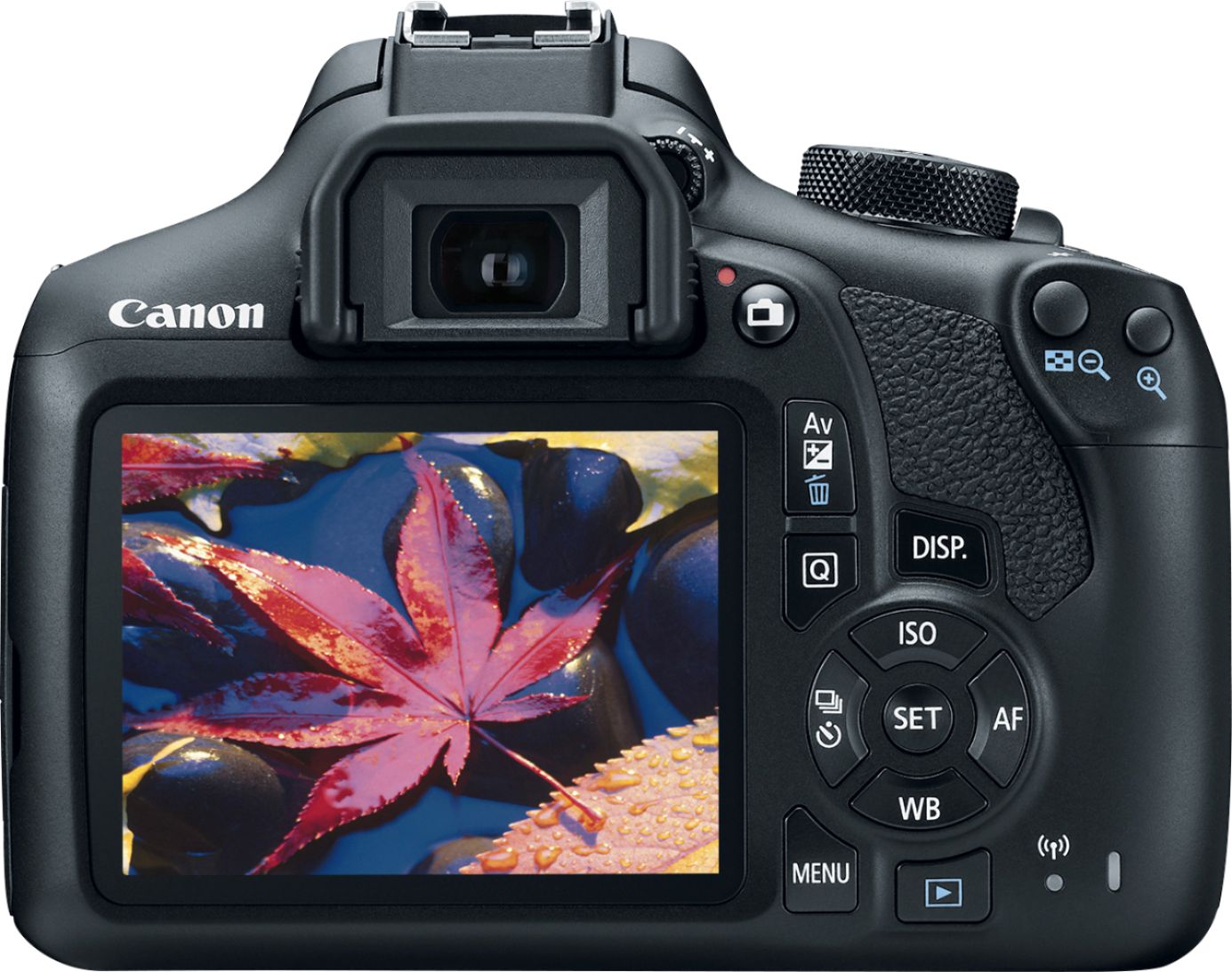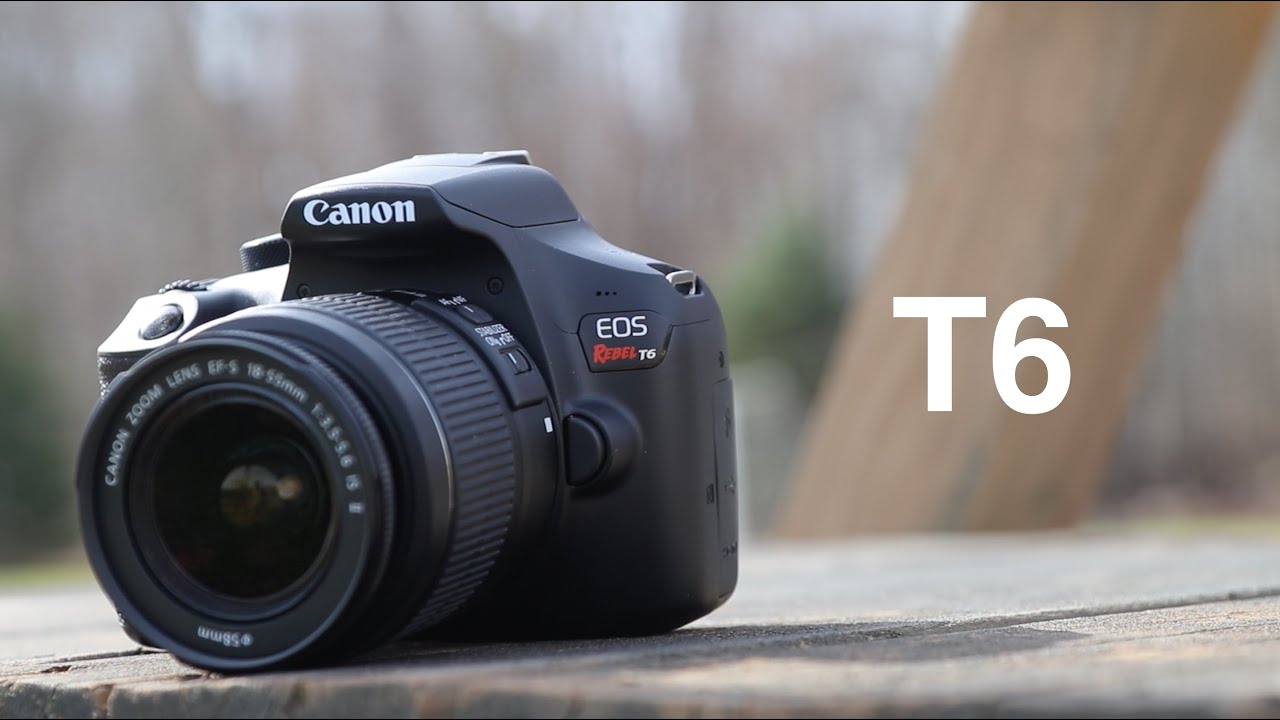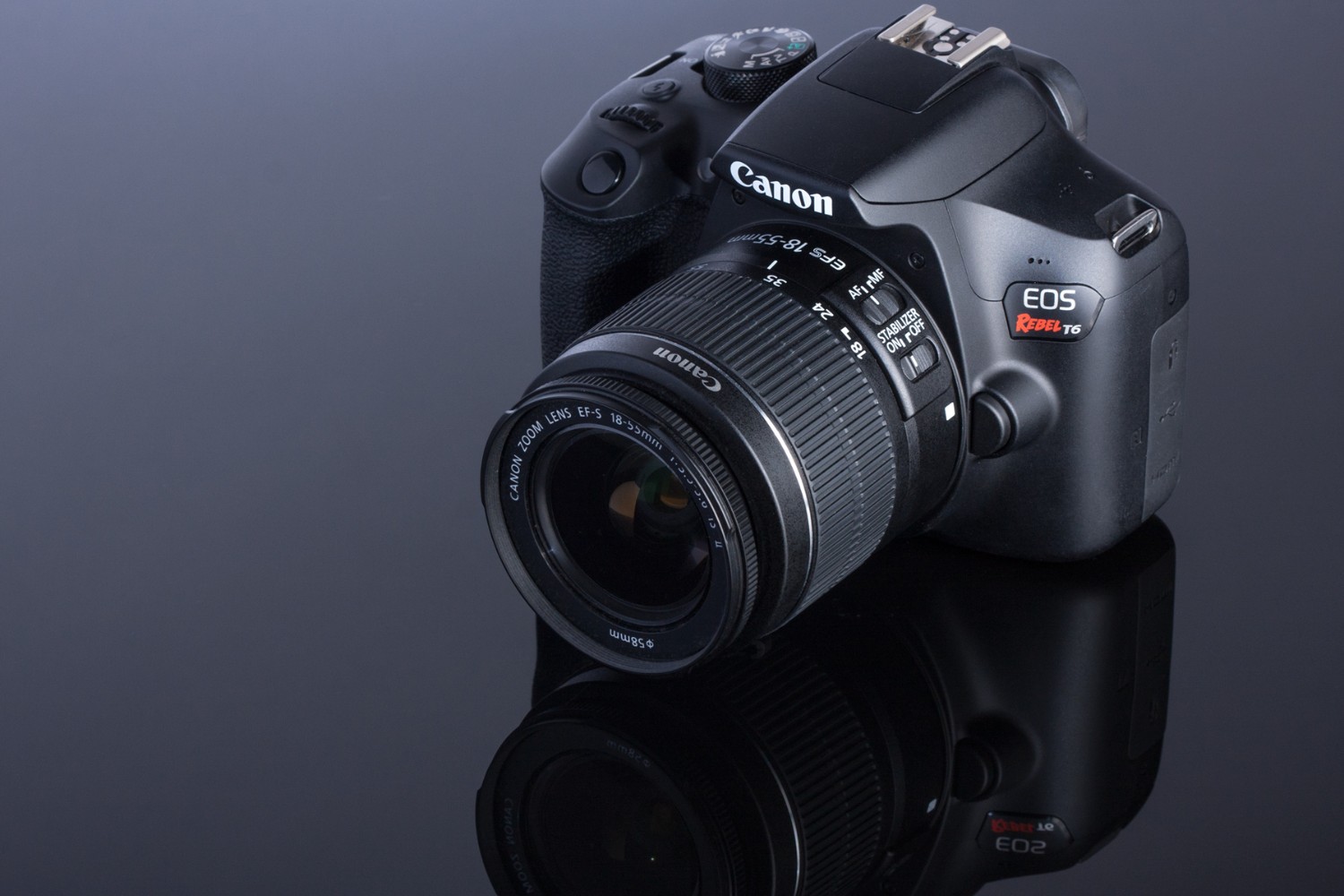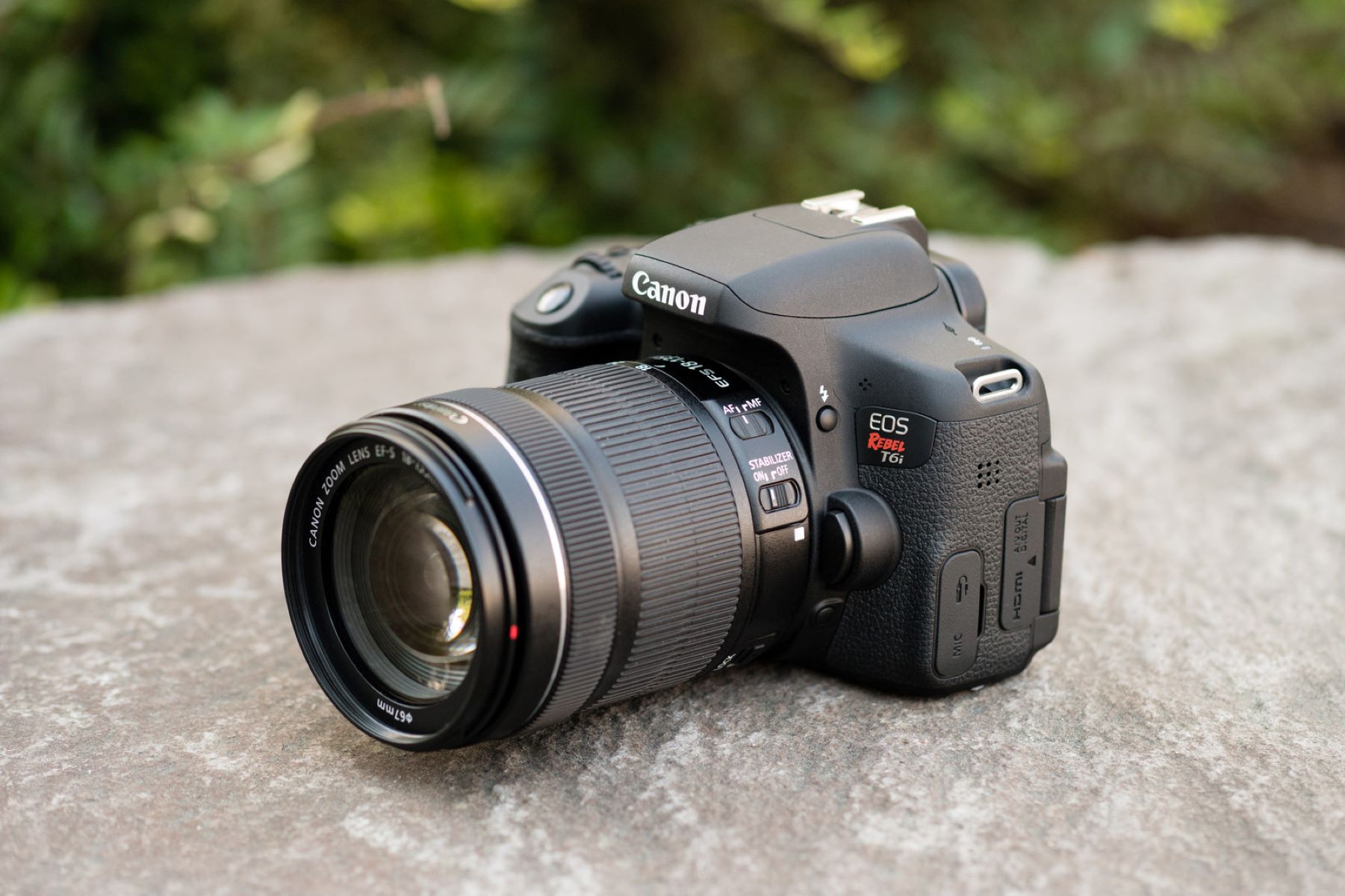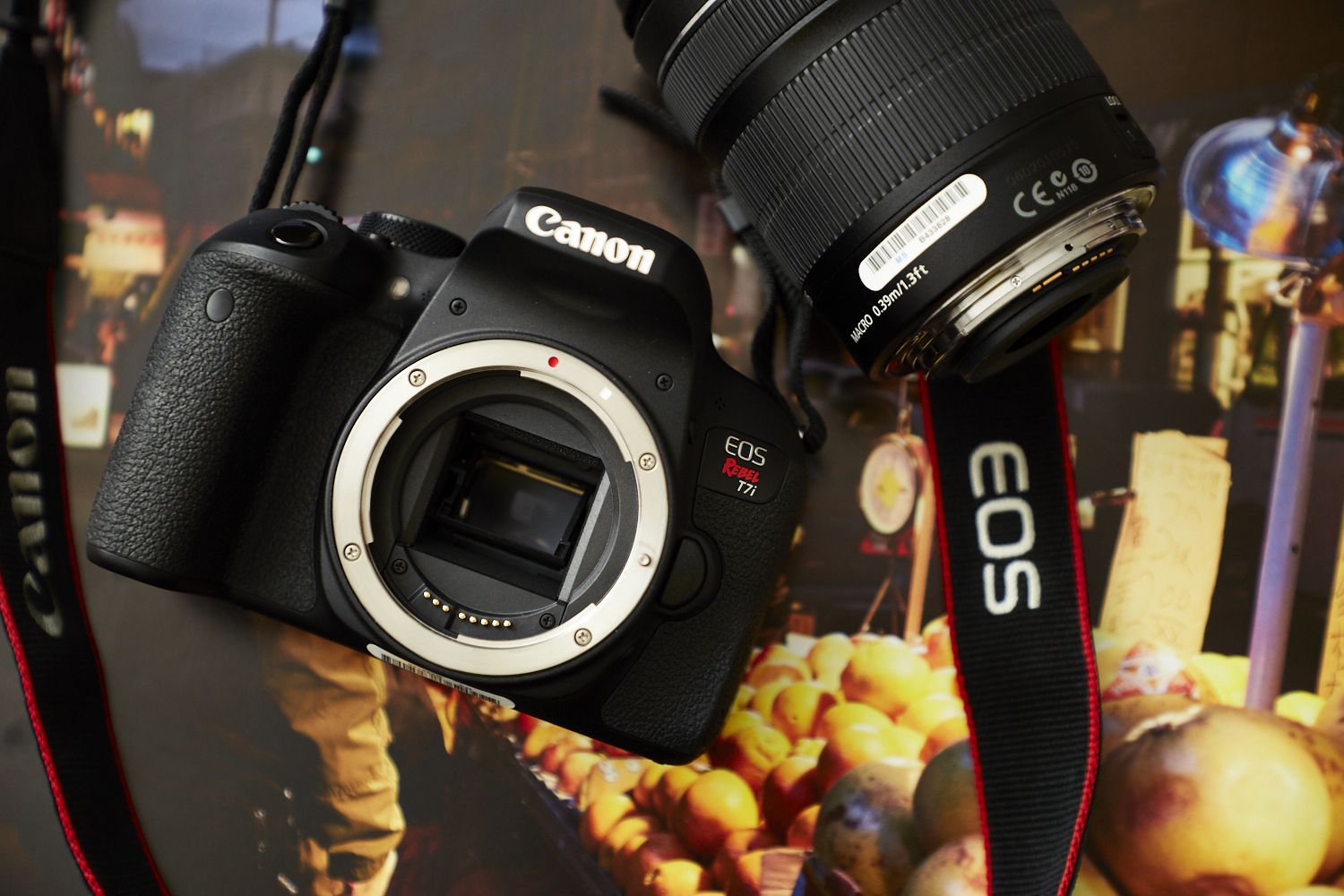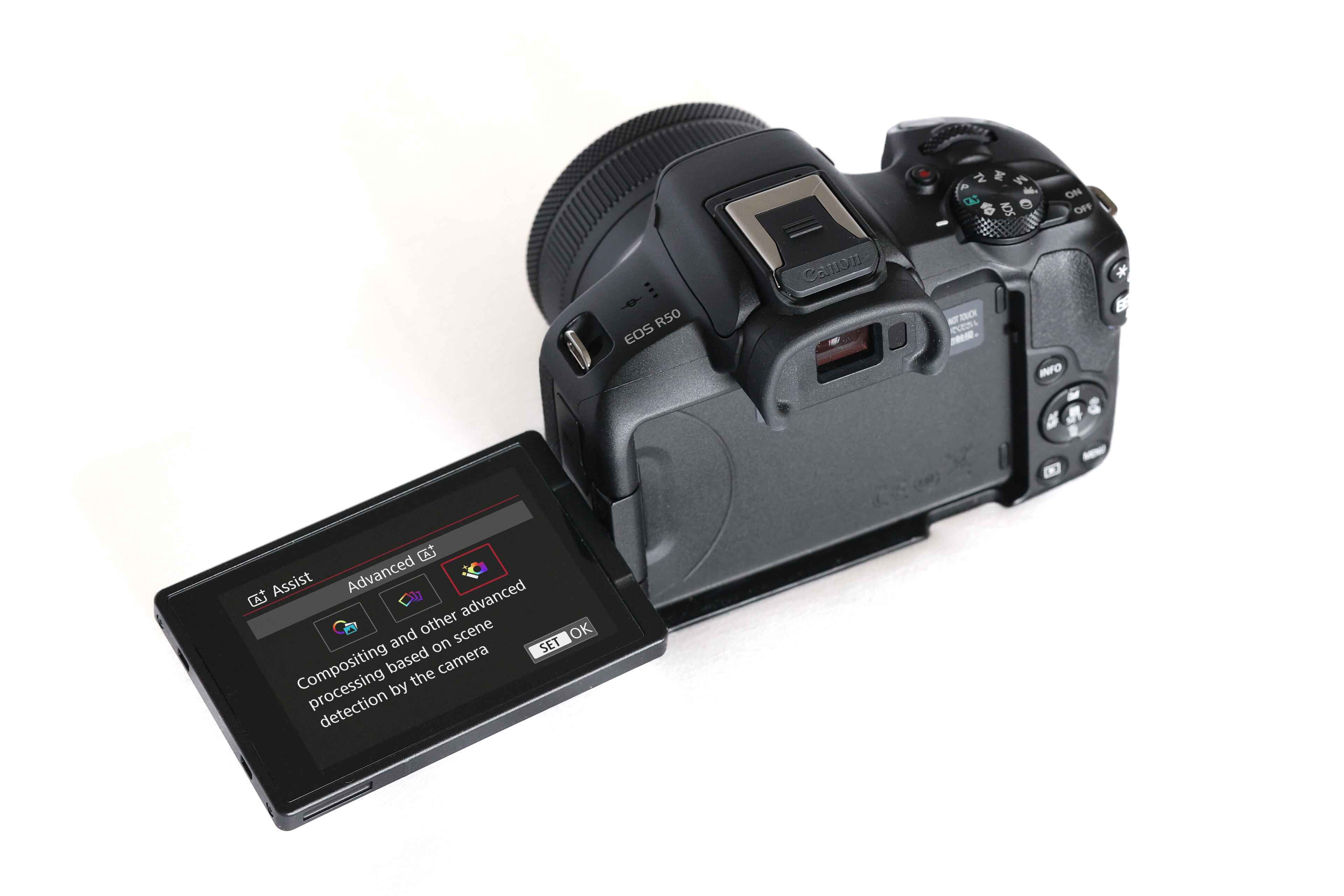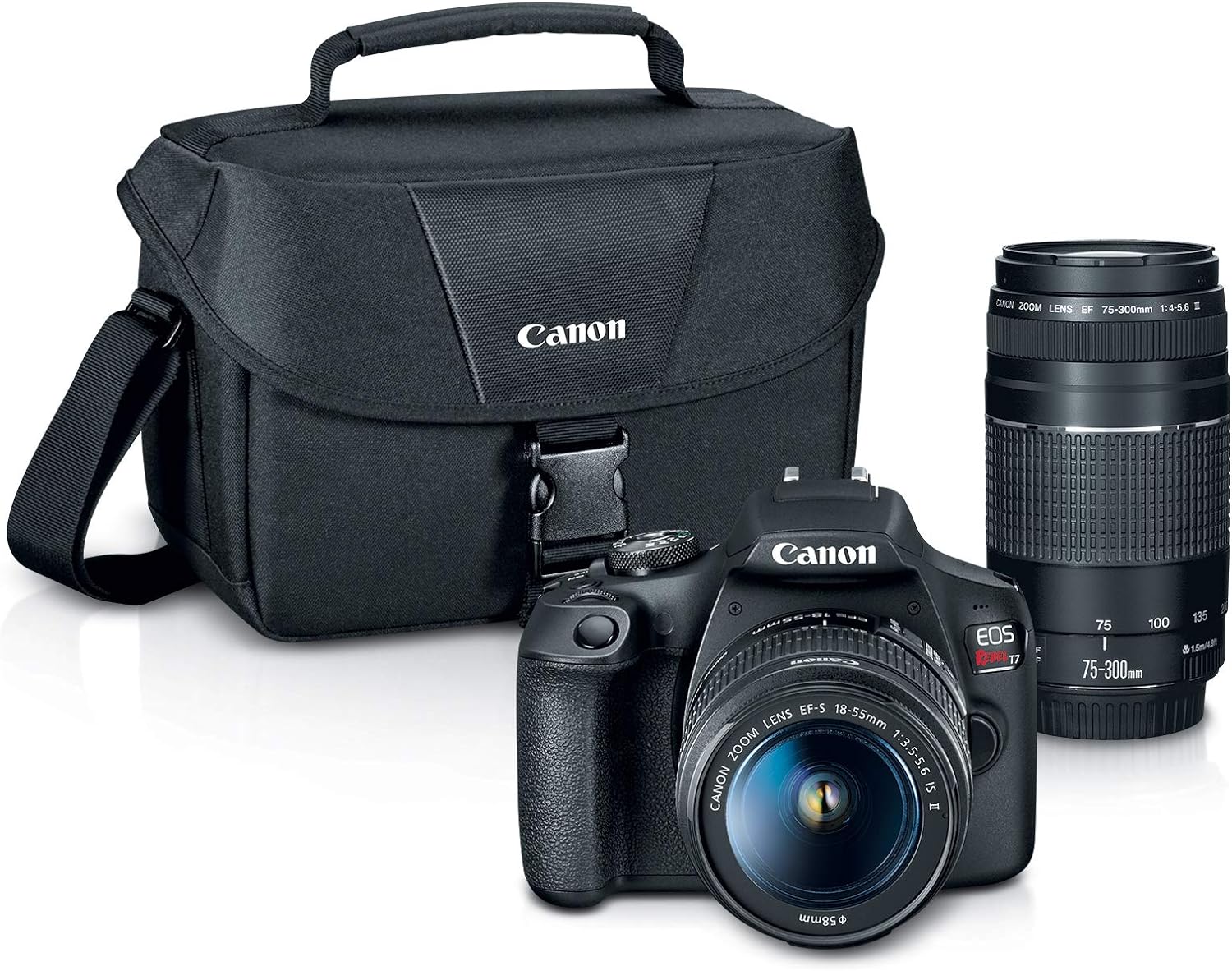Introduction
Welcome to the exciting world of photography with the Canon EOS Rebel T6 DSLR camera! Whether you are a novice or an experienced photographer, this versatile and user-friendly camera is a fantastic tool for capturing stunning images and videos. In this guide, we will explore the essential features and functions of the Canon EOS Rebel T6, providing you with the knowledge and skills to maximize its potential and unleash your creativity.
The Canon EOS Rebel T6, also known as the EOS 1300D, is equipped with an 18.0-megapixel CMOS sensor and the DIGIC 4+ image processor, delivering high-quality images with remarkable detail and clarity. Its intuitive interface and ergonomic design make it an ideal choice for photographers looking to elevate their craft. Whether you are embarking on a photographic journey or upgrading from a point-and-shoot camera, the EOS Rebel T6 offers an array of features and settings to help you capture breathtaking moments with ease.
Throughout this guide, we will delve into the fundamental aspects of using the Canon EOS Rebel T6, including familiarizing yourself with the camera, mastering basic settings, understanding exposure, utilizing different shooting modes, refining your focusing techniques, exploring lenses and filters, comprehending white balance, enhancing composition, and employing post-processing and editing techniques. By the end of this journey, you will have the confidence and expertise to maximize the potential of your Canon EOS Rebel T6 and produce captivating photographs that reflect your unique vision and style.
Whether you are capturing the beauty of landscapes, the spontaneity of street photography, the intimacy of portraits, or the excitement of events, the Canon EOS Rebel T6 empowers you to translate your creative vision into compelling visual narratives. So, let's embark on this enriching exploration of photography with the Canon EOS Rebel T6, where every click of the shutter opens a world of possibilities.
Getting to Know Your Canon EOS Rebel T6
Before embarking on your photographic journey with the Canon EOS Rebel T6, it’s essential to familiarize yourself with the camera’s physical and technical attributes. The EOS Rebel T6 boasts a compact and lightweight design, making it convenient to carry and handle, whether you’re capturing everyday moments or embarking on photographic expeditions. Its ergonomic grip and intuitive button layout ensure comfortable and efficient operation, allowing you to focus on capturing the perfect shot without any unnecessary distractions.
The camera features an 18.0-megapixel CMOS sensor, which plays a pivotal role in producing high-resolution images with vibrant colors and intricate details. This sensor, coupled with the DIGIC 4+ image processor, enables the camera to deliver impressive performance in various shooting conditions, from well-lit environments to low-light settings.
Understanding the physical components of the Canon EOS Rebel T6 is crucial for harnessing its full potential. Familiarize yourself with the location and function of the shutter button, mode dial, control buttons, and the LCD screen. The mode dial offers a range of shooting modes, including the fully automatic “Scene Intelligent Auto” mode, creative filters, and manual shooting modes, allowing you to tailor your shooting experience to suit your creative vision.
Exploring the camera’s menu system is equally important for customizing settings and accessing advanced features. The intuitive menu interface provides access to a plethora of options, including image quality settings, white balance adjustments, autofocus configurations, and creative filters. Additionally, the camera’s built-in Wi-Fi and NFC connectivity enable seamless sharing of your images and videos with compatible devices, enhancing your ability to showcase your work to the world.
As you acquaint yourself with the Canon EOS Rebel T6, take the time to explore its physical attributes, menu system, and connectivity options. By understanding the camera’s capabilities and functionalities, you will be well-prepared to embark on a fulfilling photographic journey, capturing moments with precision and creativity.
Basic Camera Settings
Mastering the basic settings of your Canon EOS Rebel T6 is essential for achieving optimal results in your photography endeavors. By familiarizing yourself with these fundamental adjustments, you can fine-tune the camera to suit specific shooting scenarios and unleash your creative potential.
Exposure Settings: Understanding the exposure triangle, comprising aperture, shutter speed, and ISO, is crucial for controlling the amount of light that enters the camera. The aperture dictates the depth of field, the shutter speed determines the motion blur, and the ISO regulates the camera’s sensitivity to light. Experimenting with these settings allows you to achieve the desired exposure for your images, whether you’re aiming for a shallow depth of field in portraits or freezing fast-paced action in sports photography.
White Balance: The white balance setting enables you to adjust the color temperature of your images, ensuring that the colors appear natural and true to life. By selecting the appropriate white balance preset or manually adjusting the color temperature, you can mitigate the effects of different lighting conditions, such as fluorescent or incandescent lighting, and achieve accurate color reproduction in your photographs.
Image Quality and File Format: The EOS Rebel T6 offers a range of image quality settings, allowing you to capture images in various file formats, such as JPEG and RAW. Choosing the appropriate file format and image size enables you to balance file size and image quality, catering to your specific requirements for post-processing and sharing. Additionally, shooting in RAW format preserves the maximum amount of image data, affording greater flexibility during the editing process.
Autofocus Modes: The camera provides multiple autofocus modes, including One-Shot AF, AI Servo AF, and AI Focus AF, each tailored to different focusing scenarios. Whether you’re capturing stationary subjects or tracking moving subjects, understanding and selecting the appropriate autofocus mode ensures that your images are sharp and well-focused, enhancing the overall visual impact of your photographs.
By acquainting yourself with these basic camera settings and their implications, you will be equipped to harness the full potential of your Canon EOS Rebel T6, elevating the quality and visual appeal of your photographic compositions. These settings serve as the building blocks for creating compelling images, and mastering them will empower you to express your artistic vision with precision and finesse.
Understanding Exposure
Exposure is a fundamental concept in photography, and mastering it is essential for capturing well-balanced and visually captivating images with your Canon EOS Rebel T6. Exposure refers to the amount of light that reaches the camera’s sensor, and achieving the ideal exposure involves a delicate balance between aperture, shutter speed, and ISO settings.
Aperture: The aperture, represented by the f-stop value, controls the size of the lens opening through which light enters the camera. A lower f-stop (e.g., f/2.8) results in a larger aperture, allowing more light to reach the sensor and producing a shallow depth of field, ideal for portraits and close-up photography. Conversely, a higher f-stop (e.g., f/16) yields a smaller aperture, limiting the amount of light and increasing the depth of field, suitable for landscape and architectural photography.
Shutter Speed: Shutter speed determines the duration for which the camera’s shutter remains open, exposing the sensor to light. A fast shutter speed (e.g., 1/1000 sec) freezes motion and is ideal for capturing fast-paced action, sports, and wildlife photography. Conversely, a slower shutter speed (e.g., 1/30 sec) introduces motion blur, conveying a sense of movement and fluidity, making it suitable for long-exposure shots, such as light trails or flowing water.
ISO: The ISO setting regulates the camera’s sensitivity to light, with lower ISO values (e.g., ISO 100) offering optimal image quality and minimal digital noise in well-lit conditions. In low-light situations, increasing the ISO (e.g., ISO 1600) amplifies the sensor’s sensitivity, enabling you to capture properly exposed images without compromising shutter speed or aperture settings. However, higher ISO settings may introduce digital noise, impacting image clarity.
Understanding the interplay between aperture, shutter speed, and ISO empowers you to manipulate exposure creatively, tailoring it to your specific photographic intentions. Whether you’re aiming to convey a sense of motion, isolate a subject with a blurred background, or maintain sharpness throughout the frame, mastering exposure settings on your Canon EOS Rebel T6 is the key to unlocking a world of expressive and visually compelling photography.
Using Different Shooting Modes
The Canon EOS Rebel T6 offers a range of shooting modes, each designed to cater to specific shooting scenarios and creative preferences. Understanding and utilizing these modes empowers you to adapt to diverse photographic situations and achieve your desired visual outcomes with precision and ease.
Scene Intelligent Auto: This fully automatic mode allows the camera to analyze the scene and select the most suitable settings to produce well-exposed and balanced images. It is an excellent choice for beginners and casual shooters, providing a seamless shooting experience without the need for manual adjustments.
Program AE (P): In this mode, the camera sets the aperture and shutter speed, while still allowing you to adjust other settings such as ISO, exposure compensation, and white balance. It provides a balance between automation and user control, offering flexibility for photographers who want to fine-tune their settings without delving into full manual control.
Shutter-Priority AE (Tv): This mode enables you to set the desired shutter speed while the camera automatically adjusts the aperture to achieve the proper exposure. It is particularly useful for capturing motion, allowing you to freeze fast action with a high shutter speed or convey a sense of movement with a slower shutter speed.
Aperture-Priority AE (Av): In this mode, you can select the desired aperture, and the camera automatically adjusts the shutter speed to achieve the optimal exposure. It is ideal for controlling depth of field, allowing you to create images with a shallow or extensive area of focus, depending on your creative vision.
Manual (M): The manual mode provides complete control over all exposure settings, including aperture, shutter speed, and ISO. It offers maximum creative freedom, empowering you to fine-tune every aspect of the exposure to achieve your desired photographic results.
Portrait, Landscape, and other Scene Modes: The EOS Rebel T6 features a variety of scene modes tailored to specific subjects or shooting conditions, such as portraits, landscapes, sports, and close-up photography. These modes optimize the camera settings to suit the respective scenarios, simplifying the process of capturing compelling images in diverse situations.
By familiarizing yourself with these shooting modes and their applications, you can leverage the capabilities of your Canon EOS Rebel T6 to adapt to various shooting conditions and express your creative vision with precision and confidence. Whether you prefer the convenience of automatic modes or the creative control of manual settings, the camera offers a versatile array of options to accommodate your photographic preferences.
Focusing Techniques
Mastering focusing techniques is paramount for achieving sharp and well-defined images with your Canon EOS Rebel T6. The camera offers a range of autofocus settings and manual focusing options to accommodate diverse shooting scenarios and subjects, empowering you to capture compelling photographs with precision and clarity.
Single Point AF: This mode allows you to manually select a specific focus point, giving you precise control over the area of focus within the frame. It is particularly useful for capturing subjects with distinct visual prominence, ensuring that the camera concentrates on the intended point of interest.
AI Servo AF: AI Servo autofocus mode is designed for continuous focusing on moving subjects, making it ideal for sports, wildlife, and action photography. The camera continuously adjusts the focus to track the subject’s movement, maintaining sharpness and clarity throughout the sequence of images.
AI Focus AF: This mode automatically switches between One-Shot AF and AI Servo AF based on the subject’s motion, providing a versatile approach to focusing that adapts to changing scenarios. It offers a balance between the precision of single-shot focus and the adaptability of continuous focus, catering to a wide range of shooting situations.
Manual Focus: The manual focus option allows you to take full control over the focusing process, particularly useful in situations where the autofocus may struggle to lock onto the desired subject. It provides tactile precision, enabling you to fine-tune the focus to achieve the exact level of sharpness you desire.
Understanding the nuances of these focusing techniques equips you with the knowledge to adapt to diverse shooting conditions and subjects, ensuring that your images are consistently sharp and well-focused. Whether you’re capturing fleeting moments in fast-paced environments or meticulously composing still-life scenes, the Canon EOS Rebel T6’s versatile focusing capabilities empower you to achieve exceptional clarity and visual impact in your photographs.
Using Lenses and Filters
Exploring the diverse range of lenses and filters available for the Canon EOS Rebel T6 opens up a world of creative possibilities, allowing you to enhance your photography and achieve specific visual effects. Understanding the characteristics and applications of different lenses and filters empowers you to expand your photographic repertoire and capture images that resonate with depth and artistry.
Prime Lenses: Prime lenses offer a fixed focal length, providing exceptional image quality and low-light performance. Their simplicity and optical purity make them ideal for portraits, street photography, and low-light shooting, allowing you to capture images with outstanding sharpness and a beautiful depth of field.
Zoom Lenses: Zoom lenses provide versatile focal length ranges, offering flexibility for various shooting scenarios. They are well-suited for capturing a wide range of subjects, from expansive landscapes to distant subjects, making them indispensable tools for travel, events, and everyday photography.
Macro Lenses: Macro lenses are designed for close-up photography, enabling you to capture intricate details and textures with exceptional clarity. They are ideal for photographing small subjects such as flowers, insects, and other minute elements, allowing you to explore a captivating world of miniature beauty.
Wide-Angle and Telephoto Lenses: Wide-angle lenses excel in capturing expansive vistas and dramatic perspectives, making them indispensable for landscape and architectural photography. On the other hand, telephoto lenses bring distant subjects closer, making them essential for wildlife, sports, and candid photography, where capturing distant details is paramount.
Filters: Filters are valuable accessories that can significantly impact the visual characteristics of your images. UV filters provide protection for the front element of the lens, while polarizing filters reduce reflections and enhance color saturation, particularly beneficial for landscape photography. Additionally, neutral density filters allow for long exposures by reducing the amount of light entering the lens, enabling creative effects such as motion blur in daylight scenes.
By leveraging the capabilities of different lenses and filters, you can enrich your photographic repertoire and imbue your images with a distinctive visual allure. Whether you are seeking to convey the grandeur of sweeping landscapes, the intimacy of macro details, or the dynamic energy of distant subjects, the Canon EOS Rebel T6, paired with the appropriate lenses and filters, equips you to realize your creative vision with precision and impact.
Understanding White Balance
White balance is a crucial aspect of photography that directly influences the color rendition and overall mood of your images. By comprehending and manipulating white balance settings on your Canon EOS Rebel T6, you can ensure that the colors in your photographs are rendered accurately and convey the intended visual atmosphere.
White balance refers to the adjustment of color temperature to neutralize any color casts caused by different light sources. The human eye naturally adapts to varying light conditions, perceiving white objects as white regardless of the light source. However, digital cameras require precise white balance settings to reproduce accurate colors under different lighting environments.
The Canon EOS Rebel T6 offers a variety of white balance presets, including daylight, shade, cloudy, tungsten, fluorescent, and flash, each tailored to specific lighting conditions. By selecting the appropriate white balance preset that corresponds to the prevailing light source, you can ensure that the colors in your images appear natural and true to life.
Additionally, the camera provides the option to set a custom white balance by capturing a reference image of a neutral-colored object under the prevailing lighting conditions. This custom white balance setting allows you to fine-tune the color rendition to match the specific characteristics of the light source, ensuring precise color accuracy in your photographs.
Understanding the impact of white balance on your images empowers you to evoke distinct visual moods and enhance the overall aesthetic appeal of your photographs. For instance, a warmer color temperature can infuse images with a cozy and inviting ambiance, ideal for capturing the golden hues of a sunset, while a cooler color temperature can convey a sense of tranquility and serenity, suited for scenes with predominant blue tones.
By mastering white balance adjustments, you can exert creative control over the color palette of your photographs, ensuring that the visual narrative accurately reflects your artistic intent. Whether you are capturing the vibrancy of outdoor scenes, the intimate warmth of indoor settings, or the ethereal glow of twilight, the Canon EOS Rebel T6’s white balance settings empower you to infuse your images with captivating and true-to-life colors.
Tips for Better Composition
Mastering the art of composition is essential for creating visually compelling and impactful photographs with your Canon EOS Rebel T6. By applying fundamental principles of composition and exploring creative techniques, you can elevate the aesthetic quality of your images and imbue them with depth, balance, and emotional resonance.
Rule of Thirds: The rule of thirds is a classic compositional guideline that involves dividing the frame into a 3×3 grid and positioning key elements along the gridlines or at their intersections. This technique creates a sense of visual dynamism and balance, drawing the viewer’s eye to the focal points of the image and enhancing its overall visual appeal.
Leading Lines: Utilizing leading lines, such as roads, pathways, or architectural elements, can guide the viewer’s gaze through the image, creating a sense of depth and visual flow. Leading lines add a dynamic element to compositions, drawing attention to the main subject and creating a compelling visual journey for the viewer’s eyes.
Foreground Interest: Incorporating elements in the foreground of the frame adds depth and dimension to the composition, creating a sense of immersion and inviting the viewer into the scene. Whether it’s a striking object, textured surface, or natural element, foreground interest can enrich the visual narrative and establish a captivating sense of perspective.
Negative Space: Embracing negative space, the unoccupied areas in the frame, can be a powerful compositional tool for emphasizing the main subject and evoking a sense of minimalism and visual serenity. By strategically incorporating negative space, you can create a sense of balance and focus, allowing the main subject to command attention and convey a compelling visual story.
Experiment with Perspectives: Exploring different perspectives, such as low-angle or high-angle shots, offers a fresh and dynamic approach to composition. Changing the vantage point can transform the visual narrative, infusing images with unique energy and engaging the viewer with unconventional viewpoints.
Consider Symmetry and Patterns: Symmetry and patterns can create visually striking compositions, evoking a sense of harmony and order. Whether capturing architectural details, natural formations, or man-made designs, leveraging symmetry and patterns can instill a sense of visual rhythm and aesthetic allure in your photographs.
By incorporating these compositional tips and techniques into your photographic practice, you can infuse your images with a heightened sense of visual impact and narrative resonance. Whether you are capturing landscapes, portraits, or everyday scenes, the Canon EOS Rebel T6, coupled with thoughtful composition, empowers you to craft images that resonate with depth, emotion, and visual allure.
Post-Processing and Editing Techniques
Post-processing and editing are essential stages in the photographic workflow, allowing you to refine and enhance your images to achieve the desired visual impact and storytelling. With the Canon EOS Rebel T6, coupled with the right post-processing techniques, you can elevate the quality and aesthetic appeal of your photographs, bringing your creative vision to life.
RAW Image Processing: Shooting in RAW format provides the maximum amount of image data, affording greater flexibility during post-processing. RAW files retain the most detail and allow for extensive adjustments to exposure, white balance, and color rendition without compromising image quality.
Exposure and Contrast Adjustments: Fine-tuning exposure and contrast can significantly impact the overall look and mood of your images. Adjusting exposure levels and contrast settings enables you to enhance the dynamic range, emphasize details, and evoke a sense of depth and visual richness in your photographs.
Color Correction and White Balance Refinement: Post-processing offers the opportunity to refine color accuracy and white balance, ensuring that the colors in your images are rendered with precision and consistency. Adjusting color temperature, tint, and individual color channels allows you to achieve the desired color rendition and convey the intended visual atmosphere.
Sharpening and Noise Reduction: Applying selective sharpening and noise reduction techniques enhances the overall clarity and visual refinement of your images. By selectively sharpening key details and mitigating digital noise, you can ensure that your photographs are rendered with exceptional sharpness and image fidelity.
Cropping and Composition Refinement: Post-processing allows for precise cropping and composition refinement, enabling you to fine-tune the framing and visual balance of your images. Whether it’s adjusting the aspect ratio, straightening horizons, or refining the overall composition, these adjustments can enhance the visual impact and storytelling of your photographs.
Creative Effects and Artistic Enhancements: Experimenting with creative effects, such as black and white conversion, color toning, and selective vignetting, offers a platform for artistic expression and visual storytelling. These enhancements can imbue your images with a distinct mood, evoke emotional resonance, and elevate the aesthetic allure of your photographs.
By integrating these post-processing and editing techniques into your photographic workflow, you can refine and elevate the visual impact of your images, ensuring that they resonate with depth, emotion, and artistic finesse. The Canon EOS Rebel T6, in conjunction with thoughtful post-processing, empowers you to realize your creative vision with precision and impact, producing images that captivate and inspire.







